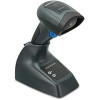
Published on 2015-09-25
Rarely has something like retuning the TV brought so many benefits. Certainly, everyone will remember how, at the beginning of this year, our televisions started to go crazy, channels jumping from frequency to frequency and the guide filling up with duplicates, definitive channels, provisional ones, and various test patterns until finally, after several retunings, the situation stabilized.
This process, known as the digital dividend, aimed to free up the 800 MHz band of the radioelectric spectrum, traditionally used for TV broadcasting. For this, broadcasters had to change the frequency of their channel transmissions. Why all this herculean fuss without any apparent benefit at first glance? Well, to avoid the interferences that would have occurred after the arrival of 4G in Spain.
This technology, which began to be implemented in 2014 in our country from the 1,800 MHz band and allows for a data transmission speed through air superior to that of a standard ADSL connection, is in full process of expansion and coverage extension, so the 800 MHz band brings us some advantages in terms of coverage, infrastructure profitability, and ultimately, service efficiency.
Retuning is well worth a 4G
According to physics, low-frequency electromagnetic waves travel through materials more easily. This gives the 800 MHz band a considerable advantage over the 1,800 MHz band because the signal emitted through it has a greater penetration capacity through walls, building barriers, and all kinds of obstacles, substantially improving indoor coverage.
Moreover, following the laws of physics, the higher the frequency of a wave, the shorter its length, and that's why an 800 MHz wave can go further (cover more territory with the same means) than a 1,800 MHz wave. This means being able to expand coverage more quickly and at a better cost for operators, which will aid in its rapid expansion until it's implemented across the entire territory.
Finally, the band freed up by the digital dividend allows for greater speed in general, as its opening means decongesting the rest of the bands used by 4G. Having the same traffic in more space increases speed, and as coverage increases, so does the speed at which we download information.
To take advantage of the benefits offered by the new 800 MHz band, all that is needed is to acquire a terminal compatible with the LTE band 20, which corresponds to the freed frequency, and live in one of the cities where this band is operational, although each passing day, the coverage (currently around 65%) is increasing, and the day when we can fly with our mobiles is not far off.
COMMENTS
No customer comments for the moment.